The American Crocodile Is A Large Crocodilian Native To The Americas
In Southern Florida, there is another member of the order of Crocodilia besides an alligator that you might encounter. That’s the American crocodile. When you are in Florida, you are likely to be within a mile of several American alligators. Within the state, there are more than 22 alligators per square mile. In Southern Florida, alligators share the same habitat with American Crocodiles.
They’re not nearly as numerous as alligators. However, there are still an estimated 500 to 1200 American Crocodiles in south Florida. There’s an additional estimated 1000 to 2000 living in Mexico and central and south America.
If you come upon one of these animals in South Florida, you might want to be able to distinguish it from an American Alligator Southern Florida, southern Central America, northernmost South America, and various Caribbean islands, including the Cayman Islands, Cuba, Hispaniola, Jamaica, Margarita, Martinique, and Trinidad.
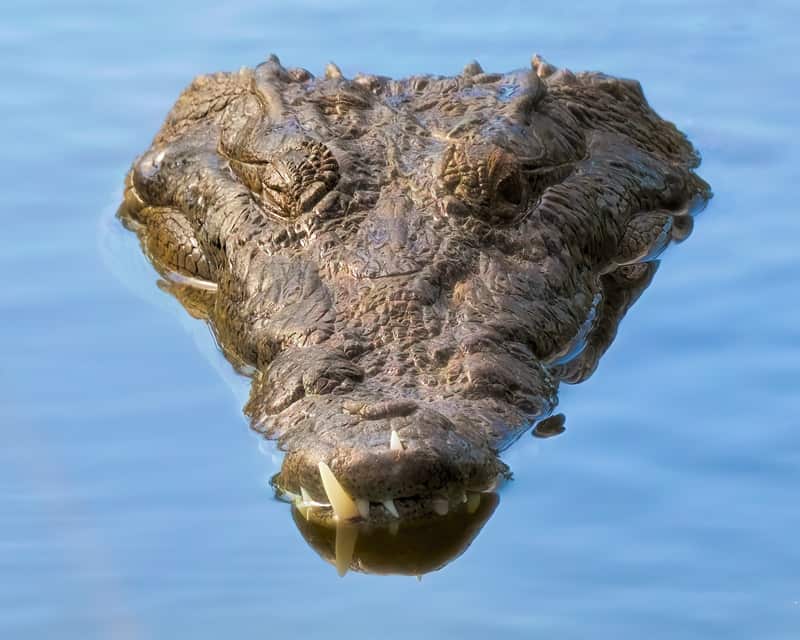
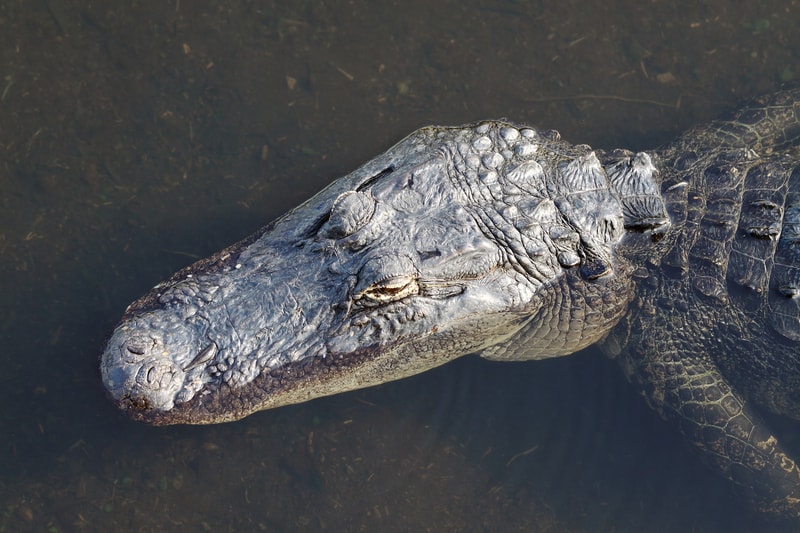
American Crocodile vs American Alligator
American crocodiles and American Alligators differ on the following points.
- Color
- Shape of head and snout
- Mature Size
- Jaw structure and visibility of teeth
- Ability to exist in saltwater
- Tolerance to cold
- Level of aggressiveness towards humans
- Life expectancy
- Location of isos on the body
- How do they build their nests?
Color
American Crocodiles are tan to tannish grey. On the other hand, alligators are dark grey to black.
The condition of the water these animals live in affects their color. Dense green algae will make them greener, while tannins from overhanging foliage will make their skin darker.
Shape of Head and Snout
The snout of an American crocodile is more slender and narrower at the tip than that of an alligator. An alligator’s nose is flatter and broader than a crocodile’s. If you look at an alligator’s nose from above, you’ll notice that it’s rounded and almost u shaped. Conversely, an American Crocodiles’ nose comes to a V.
Mature Size
Male American Crocodiles attain lengths up to twenty feet and can weigh up to a ton. Their female American crocodile counterparts are up to 12 1/2 ft. in length.
American Alligators can attain lengths of 11 to 15 feet and weigh up to 1000 pounds. The largest American Alligator ever recorded was 19 ft. and 2 inches long.
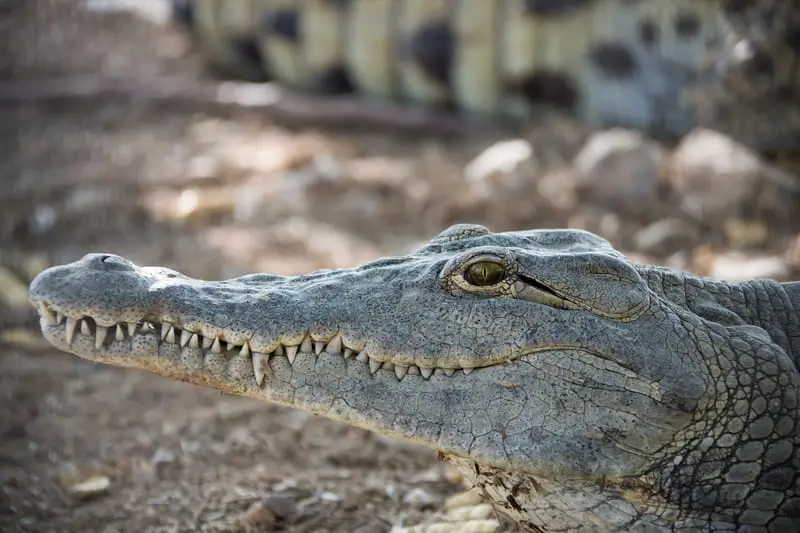
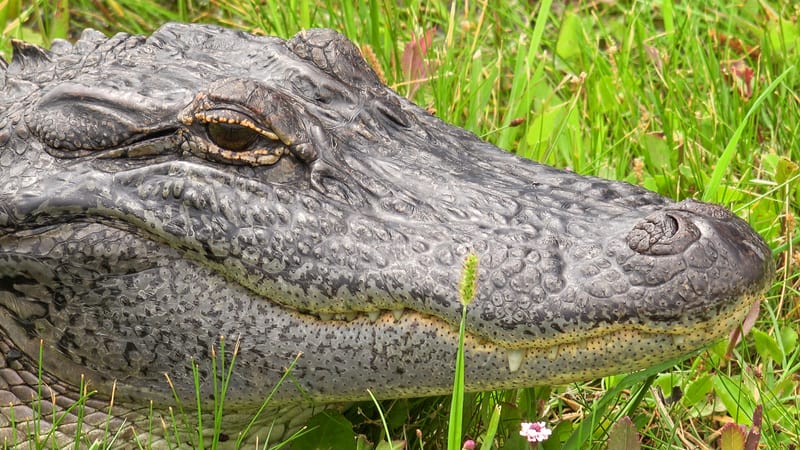
Jaw Structure and Visibility of Teeth
Only an alligator’s upper teeth are visible when it closes its jaws. That’s because its upper jaw overhangs its lower one. As a result, the teeth in its lower jaw fit inside the teeth in its upper one. On the other hand, a crocodile’s jaws are pretty much in line, and instead of meshing together when its jaws are closed, the teeth from its bottom jaw fit over its upper lip. This is particularly true of the large fourth tooth that protrudes from each of a croc’s lower jaws. That fourth tooth fits into a socket in its upper jaw on an alligator, not so with a crocodile. A crocodile’s fourth tooth is obvious and prominent.
Ability to Exist in Saltwater
Alligators can only live in freshwater. However, some alligators go to the ocean to hunt for food. They can survive at sea for up to a couple of days, but they have to return to freshwater. This is because their bodies aren’t equipped to live in a salty environment. If they take in too much saltwater, the sodium chloride concentration in their blood will become too great. This, in turn, will cause water to be drawn from their cells to compensate for the created imbalance. They will eventually die of dehydration.
When alligators hunt in saltwater environments, they utilize a protective valve at the back of their throat called a glottis to keep them from swallowing saltwater. They also have protective valves in their nostrils and ears to help keep the water out during dives.
Additionally, when they swallow food that they’ve caught, they have to raise their heads out of the water to avoid taking in too much saltwater.
On the other hand, American Crocodiles, as well as all other crocodiles, are at home in either salt or freshwater environments. They have specially adapted salt glands in their mouths. This is manifested by pores at the back of their tongues that excrete excess sodium and chloride from their bloodstream. This allows them to maintain the ideal salt to water balance in their bodies.
Crocodiles, sea turtles, marine birds, sea snakes, marine iguanas, sharks, rays, and skates regulate the sodium chloride level in their bodies with salt glands.
Tolerance to Cold
American crocodiles are less tolerant to cold than are alligators. The only place that American crocodiles live in the United States is the southern end of the Florida peninsula. The furthest north that they’ve been documented to live in is Tampa Bay. They cannot live in temperatures any colder than what they have there.
On The other hand, American Alligators live as far north as Gates County, North Carolina.
The yearly mean temperature at Tampa Bay, Florida, is 74 degrees Fahrenheit. At the same time, the mean temperature at Gatesville, North Carolina (Which is the county seat of Gates County) is 60 degrees Fahrenheit.
Level of Aggressiveness Towards Humans
American Alligators are aggressive towards humans occasionally. A study completed in 2010 looked at reports of adverse encounters between humans and American Alligators from 1928 through January 1st, 2009. In those 81 years, it found that there had been 567 alligators on human attacks—twenty-four of those resulted in fatalities.
As a whole, crocodile species are much more aggressive than are alligators. American Crocodiles are considered to be one of the more timid crocodile species. They do, however, attack people on occasion. From 2008 through 2013, American crocodiles attacked 90 people. 20 of those attacks resulted in fatalities.
Life Expectancy
American Crocodiles live up to 70 years. Source On the other hand, the average life expectancy of an American Alligator is 50 years. Source
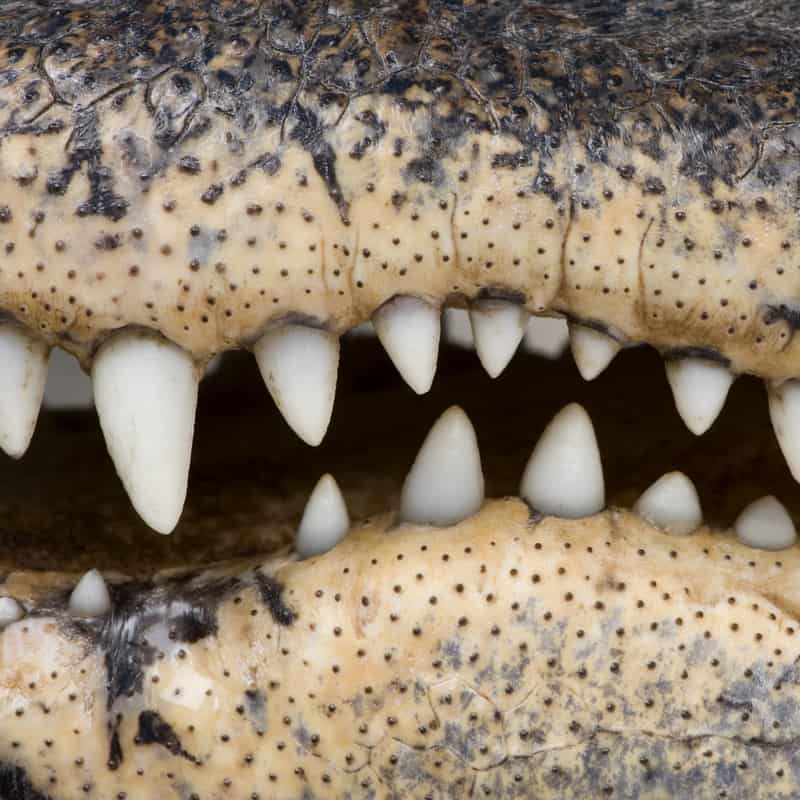
Location of ISOs on the Body
Both Alligators and crocodiles have integumentary sense organs or ISOs that look like little dots on their skin. ISOs primarily detect pressure divergences created in the water surrounding them by other animals. According to researchers at the University of Geneva, ISOs also detect temperature and chemical variances in the water.
Alligators have ISOs on their upper and lower jaws, around their noses, and on their upper palate. Crocodiles, on the other hand, have ISOs located all over their bodies.
When people seek to distinguish between crocodile and alligator/caiman leather, they look for the presence or the lack of ISO spots.
How Do They Build Their Nests
American crocodiles bury their eggs in the sand. Sometimes their nests consist of mounded up sand, and other times they simply dig holes to bury their eggs in.
On the other hand, alligators build elevated nests on dry ground out of waterside vegetation to lay their eggs in.
Where Do American Crocodiles Live?
Northern South America (which translates into northern Peru on the Pacific coast and Guyana on the Atlantic coast) is the furthest south that American Crocodiles range. From there, they live along both coastlines all the way up through Central America and Mexico. The furthest north that American crocodiles live in is the southern end of the Florida peninsula. They also live on some of the islands in the Caribbean, such as Cuba, Hispaniola, The Cayman Islands, Trinidad, Jamaica, Margarita, and Martinique.
Much of the information for this article came from “Comparing Alligators to Crocodiles“
Recent Posts
The only venomous snakes in Washington State are Northern Pacific Rattlesnakes. The Northern Pacific Rattlesnake (Crotalus oreganus oreganus) is a sub-species of the Western Rattlesnake. Anyone...
Skunks are not classified as true hibernators. But they go into a state of torpor when the weather gets cold. Skunks are light sleep hibernators, along with opossums, bears, and raccoons. ...
